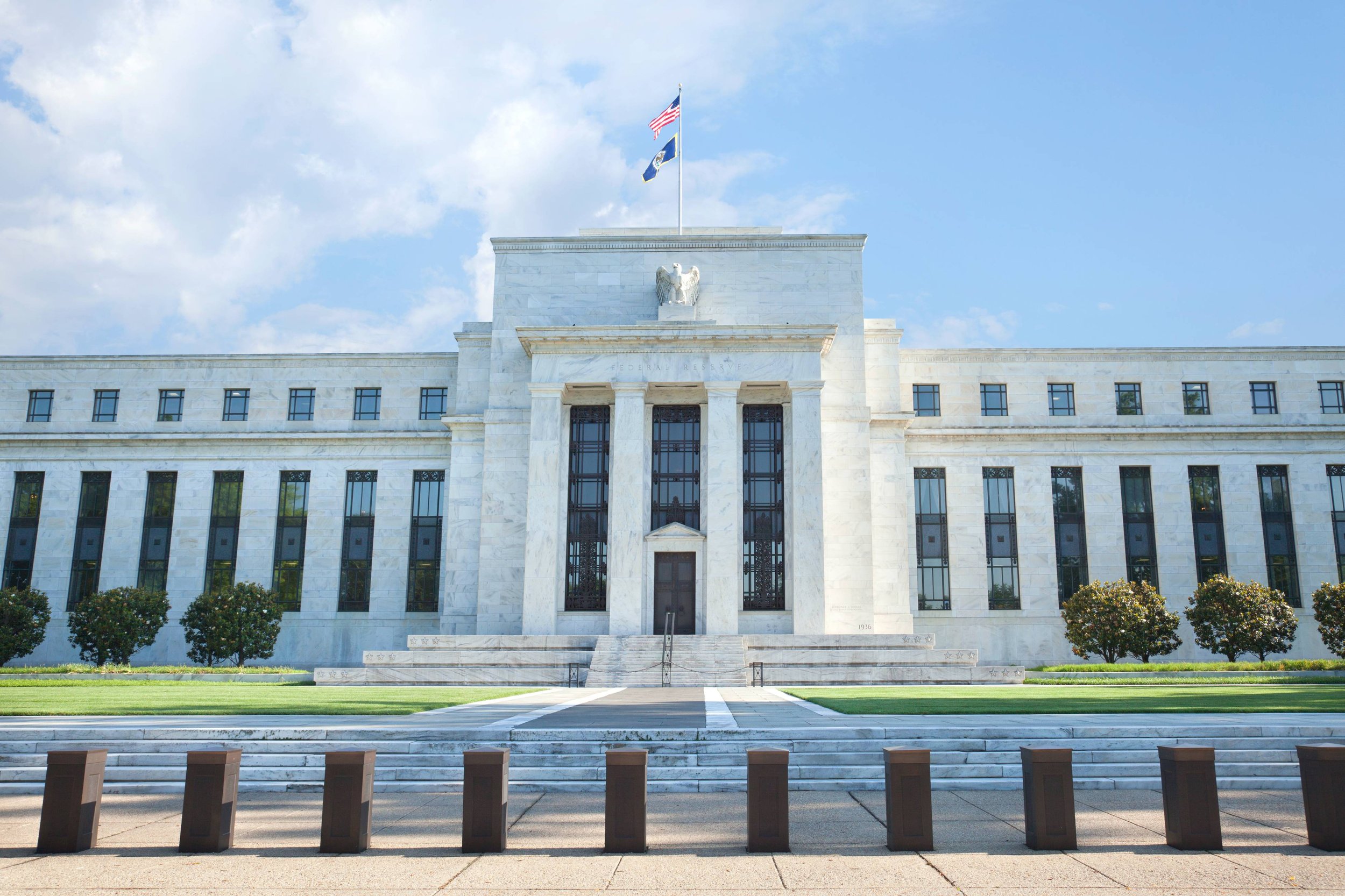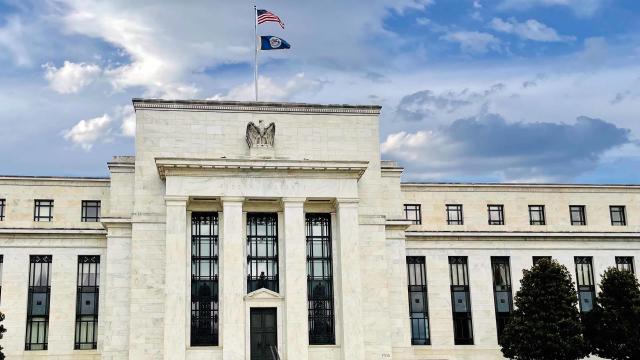US Federal Reserve Holds Steady Amidst Persistent Inflation Pressures

US Federal Reserve Holds Steady Amidst Persistent Inflation Pressures
In a significant financial development, the United States Federal Reserve has opted to maintain its key interest rates at a 22-year high, hovering between the range of 5.25% to 5.5%. This decision comes after a remarkable increase of 525 basis points in the policy rate since March 2022. While the move doesn’t necessarily surprise many observers, it is still a critical move that holds the potential to influence various aspects of the economy.
The U.S. Federal Reserve, often simply referred to as the Fed, plays a crucial role in shaping the economic landscape of the nation. Their primary responsibility lies in managing the nation’s monetary policy to achieve two main goals: promoting maximum employment and maintaining stable prices. These two objectives, while seemingly straightforward, can sometimes present the Fed with intricate challenges, and their recent decision reflects these complexities.
One key aspect driving the Fed’s decision is the persistent issue of inflation, which has been making headlines and causing concern across the nation. Inflation is essentially the increase in the prices of goods and services over time, and it can erode the purchasing power of money. To keep the economy humming along smoothly, the Fed has a target inflation rate of 2% per year. However, the reality has been quite different, with inflation stubbornly clinging above this target.

In this article, we will delve deeper into the Fed’s decision to maintain high-interest rates and its implications on the U.S. economy. We will also explore the factors contributing to the current inflationary pressures and the challenges the Fed faces in taming them.
Inflation: A Stubborn Adversary
Inflation is like a shadow that follows the economy, and in recent times, it has grown significantly larger. The Fed’s target of 2% inflation might seem like a modest goal, but maintaining this delicate balance is essential. When inflation is too low, it can lead to economic stagnation, as consumers delay spending in anticipation of lower future prices. Conversely, when it is too high, it can erode savings and purchasing power, causing economic instability.
The current scenario paints a picture of inflation running rampant, albeit somewhat tamed compared to previous months. Prices of essential goods and services have surged, affecting the daily lives of Americans. Gasoline prices, food costs, housing, and other essential commodities have seen significant hikes, squeezing the budgets of many households.
This surge in prices can be attributed to several factors:
1. Supply Chain Disruptions: The COVID-19 pandemic disrupted global supply chains, causing delays in the production and distribution of goods. This created shortages and drove up prices, especially for items with high demand.
2. Increased Demand: As the economy reopened and stimulus checks were distributed, consumer demand for goods and services surged. This heightened demand put upward pressure on prices.
3. Labor Shortages: Some industries have faced labor shortages, leading to higher wages to attract workers. This increase in labor costs can result in price hikes for consumers.
4. Energy Prices: Rising energy prices, including gasoline and natural gas, have a cascading effect on various sectors of the economy, contributing to inflation.
The Fed’s Balancing Act
To combat inflation, central banks like the Federal Reserve often resort to raising interest rates. Higher interest rates can act as a brake on economic activity by making borrowing more expensive, which, in turn, can reduce consumer spending and business investments. By doing so, the central bank aims to cool down the economy and curb inflationary pressures.
The Fed has been gradually raising interest rates since March 2022, with a cumulative increase of 525 basis points. This aggressive move signaled their commitment to taming inflation. However, the decision to hold steady at the current range of 5.25% to 5.5% raises important questions.
Why Maintain High Interest Rates?
The decision to maintain high-interest rates is not without its reasons. While inflation has fallen from its peak, it remains above the Fed’s target of 2%. The central bank’s policymakers are wary of the potential for inflationary expectations to become embedded in the economy. If consumers and businesses start to anticipate higher inflation in the future, they may adjust their behavior accordingly, leading to a self-fulfilling prophecy of rising prices.
Additionally, the Fed is considering the broader economic landscape. The recovery from the COVID-19 pandemic has been uneven, with certain sectors and demographic groups experiencing more challenges than others. Raising interest rates too quickly could stifle job growth and hinder the progress of those who have not yet fully recovered from the economic downturn.
By maintaining high-interest rates for the time being, the Fed aims to strike a balance between controlling inflation and supporting economic growth. It’s a delicate tightrope walk, with each step carefully calculated to ensure that neither objective is compromised.
Implications for the Economy
The Fed’s decision to keep interest rates unchanged at a 22-year high carries significant implications for various sectors of the U.S. economy:
1. Borrowing Costs: With interest rates remaining high, borrowing costs will continue to be elevated. This can impact consumers seeking mortgages, auto loans, or credit cards, as well as businesses looking to expand and invest.
2. Housing Market: The housing market, which has seen skyrocketing prices in recent years, may see a slowdown in price appreciation as mortgage rates remain elevated. This could offer some relief to potential homebuyers, although affordability remains a challenge in many regions.
3. Stock Market: The stock market can be sensitive to changes in interest rates. Higher rates can lead to lower valuations for equities, potentially impacting investors’ portfolios and retirement savings.
4. Inflation Outlook: The decision to maintain high-interest rates is a signal that the Fed is committed to taming inflation. It may take some time for the effects of this policy to trickle down and have a noticeable impact on inflation rates.
5. Unemployment: The Fed’s approach to balancing inflation and employment will have implications for the job market. If the central bank maintains its focus on inflation control, job growth could slow down.
Conclusion
The United States Federal Reserve’s decision to keep key interest rates unchanged at a 22-year high reflects the complex economic landscape the nation currently faces. With inflation remaining above the target of 2%, the central bank is tasked with the challenging job of maintaining price stability while supporting economic growth and employment.
The persistence of inflationary pressures due to supply chain disruptions, increased demand, labor shortages, and rising energy prices has put the Fed in a delicate balancing act. Their decision to hold steady on interest rates is a strategic move aimed at preventing inflation from becoming entrenched in the economy while also ensuring that the recovery from the pandemic remains on track.
As the Fed continues to monitor economic indicators and assess the impact of its policy decisions, the nation will watch with keen interest to see how this balancing act unfolds and what it means for the everyday lives of Americans. In this ever-evolving economic landscape, the Fed’s role as a guardian of stability and prosperity remains crucial.




